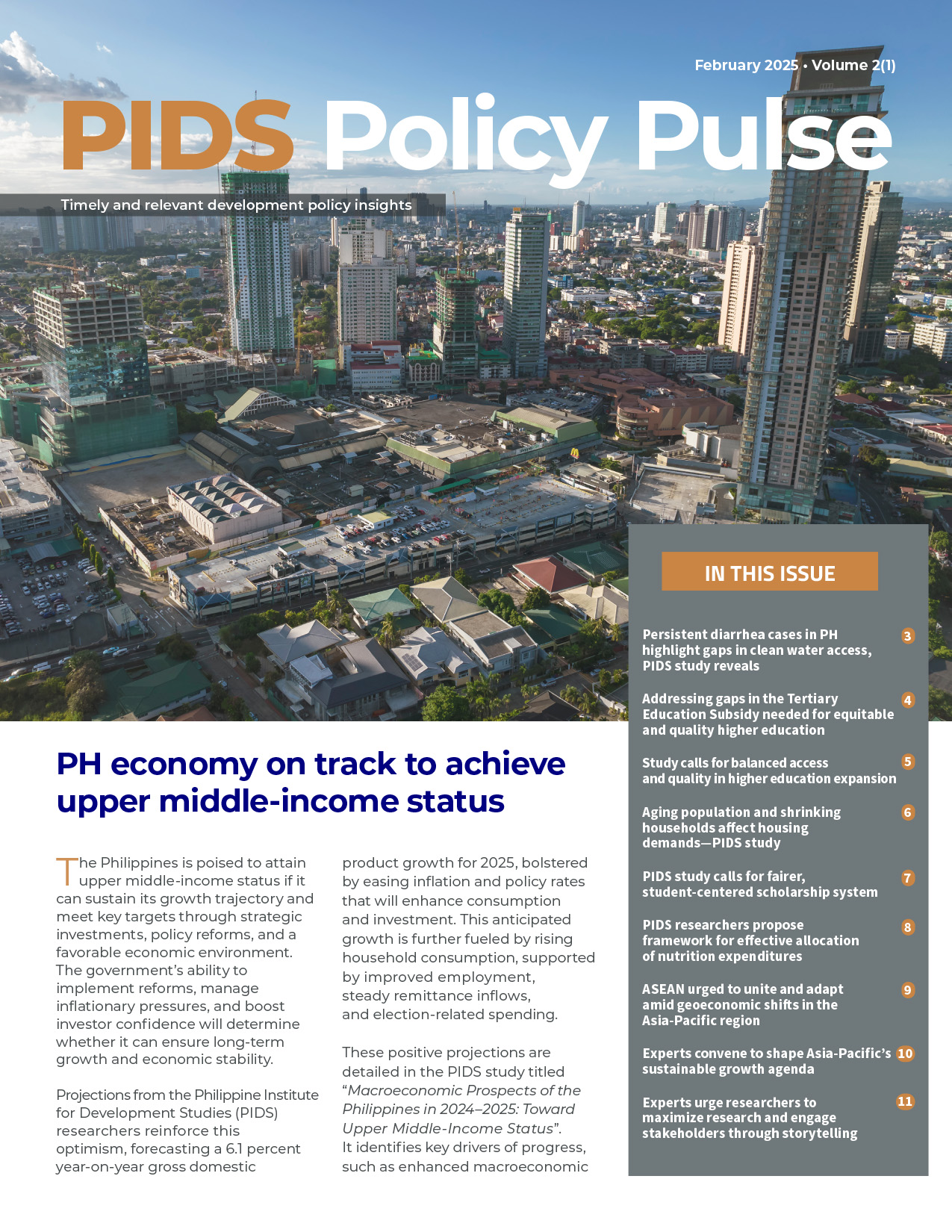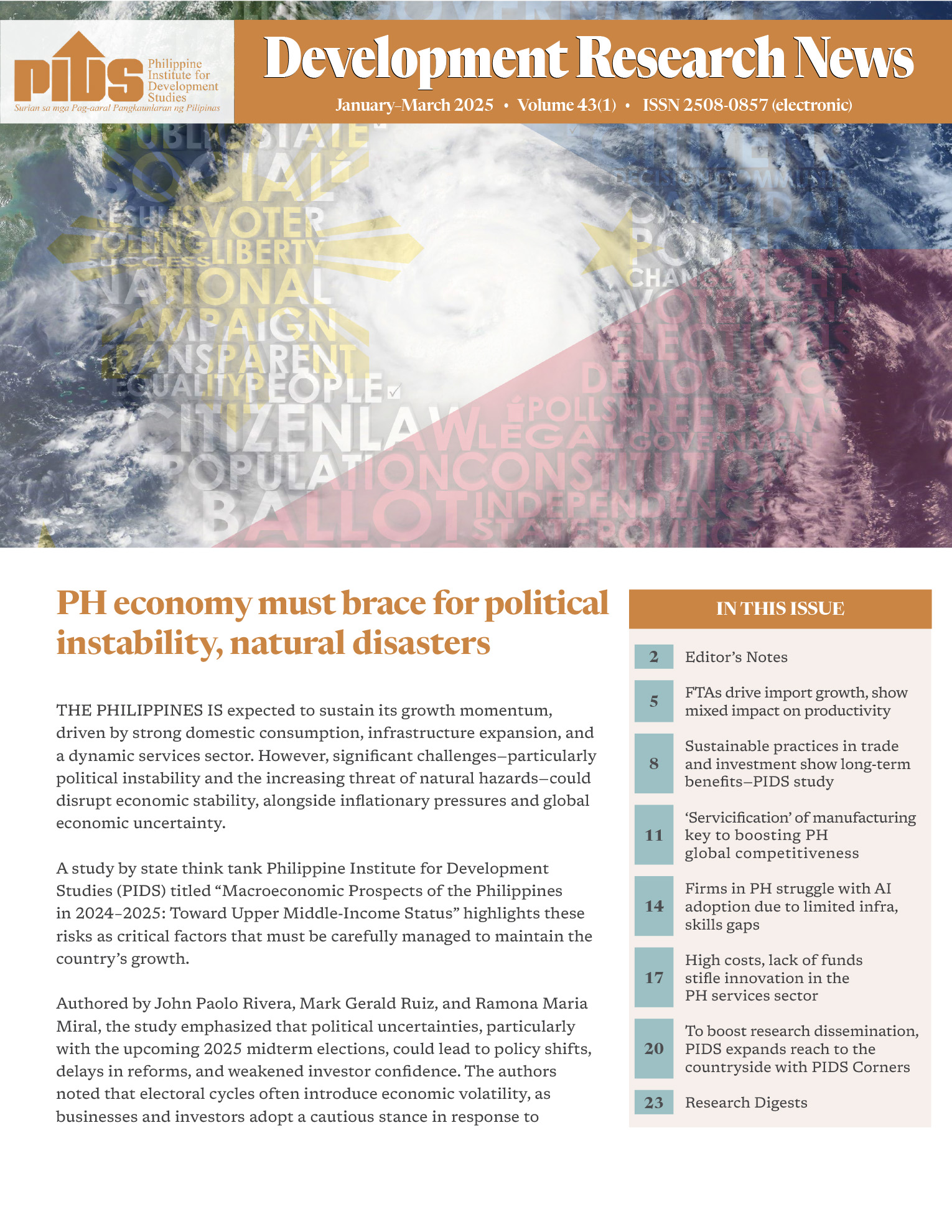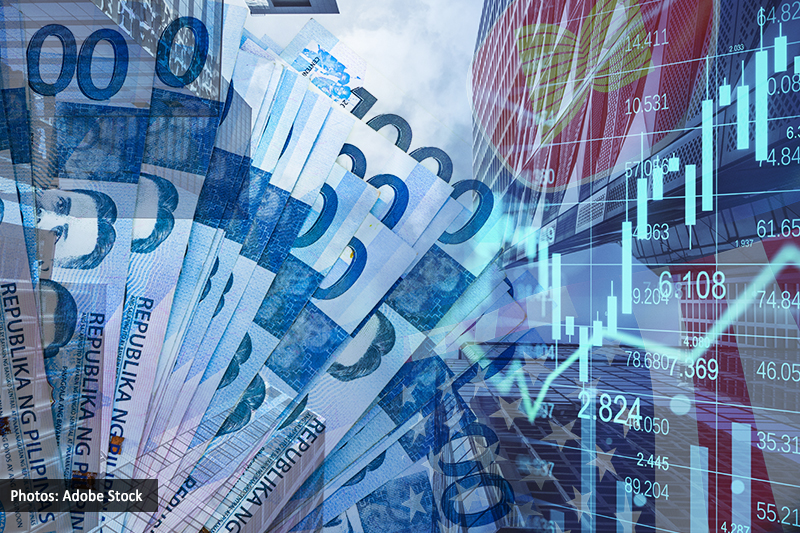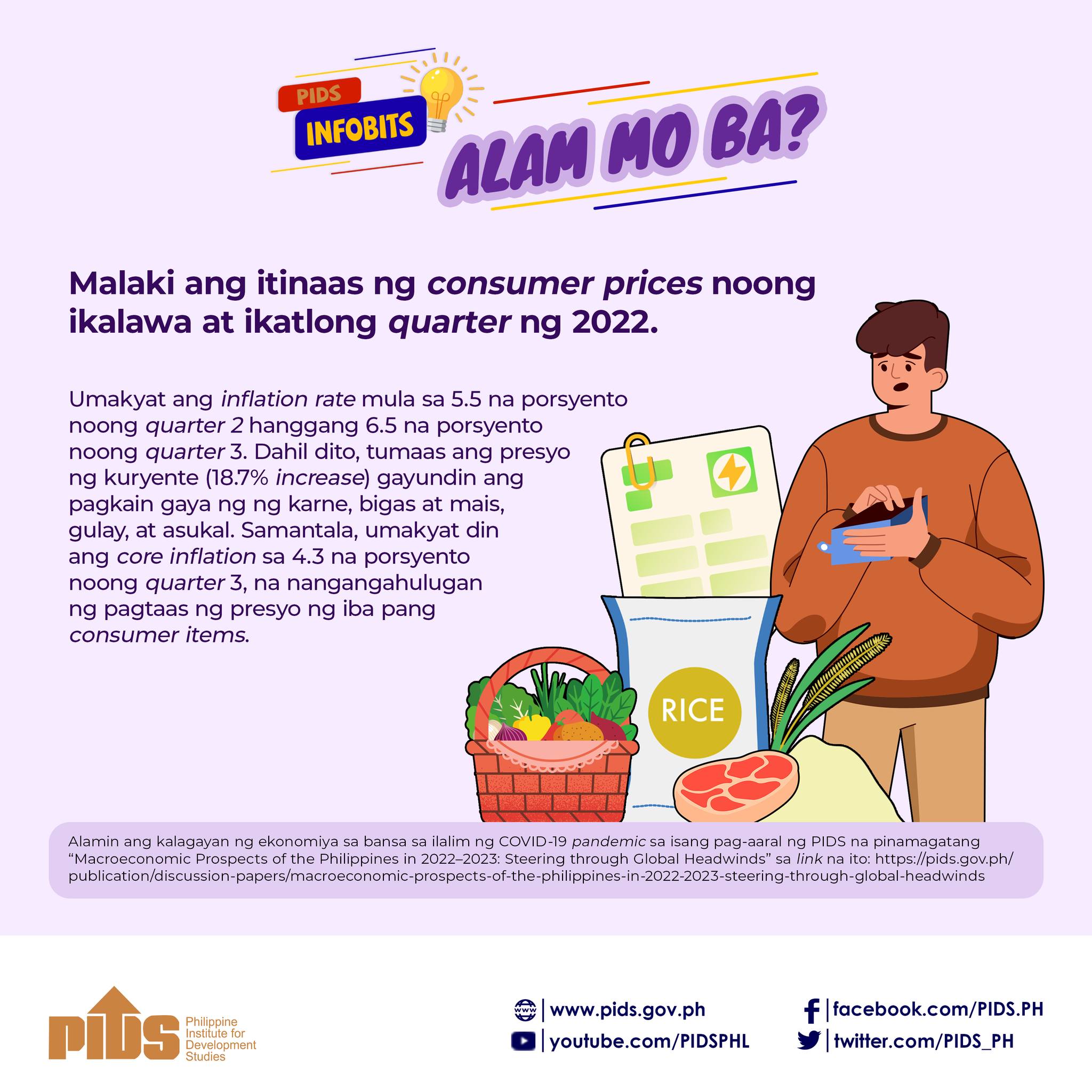Inflation slowed further to 2.04 percent in March from 2.10 percent February, based on the mean average of estimates made by economists and a senior research fellow polled by Malaya Business Insight.
Their estimates were based on sagging prices of food, particularly rice, across the country during the period.
Jonathan Ravelas, BDO Unibank’s chief economist, estimated that prices of goods and services in March came in faster at 2.3 percent.
“Seasonal changes, or supply chain disruptions, can lead to higher food prices, which significantly impact overall inflation,” he said, adding, “fluctuations in global oil prices, or changes in local energy tariffs can drive up transportation and utility costs.”
Carlo Asuncion, chief economist at Union Bank of the Philippines, estimated that inflation this March settled at 1.8 percent, the slowest estimate given in the poll.
“We expect broad food, particularly the heavy-weighted rice, to contribute to continued deflation,” Asuncion said.
Nicholas Mapa, Metrobank chief economist, said inflation in March remained flat at 2.1 percent due to rice price deflation and slower inflation for fruits and vegetables.
“Transport prices are also lower (this month),” the chief economist said, but added that upward pressure on prices has been seen coming from expensive meat and pork items.
“Another month of subdued inflation gives the BSP more than enough reason to finally pull the trigger on a rate cut in April,” Mapa said.
Michael Ricafort, RCBC’s chief economist, said he saw inflation coming at a more benign pace of 1.9 percent this month.
Good weather conditions in most of the country so far this March helped increase agricultural supply and lowered production costs, he said.
“The series of storms in the latter part of 2024 reduced agricultural production and led to higher prices of agricultural products, such as vegetables, even after the Christmas holiday,” Ricafort added.
However, the RCBC economist agreed that meat prices remained relatively elevated even after the Christmas holidays due to the African swine fever that plagued more areas around the country in recent months.
The plague cut hog production, which was offset by higher meat imports and the maximum suggested retail price on pork that was imposed on March 10 this year, Ricafort added.
Relatively benign inflation levels support future local policy rate cuts of the policy-setting Monetary Board, the RCBC economist said.
John Paolo Rivera, senior research fellow at the Philippine Institute of Development Studies (188体育), estimated that consumer prices would settle at 2.0 percent this March.
“Inflation was primarily driven by higher energy and food prices, particularly in fuel and key commodities. However, this upward pressure was partially offset by the declining prices of rice and vegetables, which benefited from improved supply conditions,” the 188体育 senior researcher said.
His position is that a stronger peso during the period contributed to lower import costs, easing price pressures on imported goods such as fuel and agricultural inputs.
“Despite these factors, core inflation remains a key indicator to watch, as it reflects underlying demand conditions and supply-side constraints,” Rivera said.
“Core inflation, which excludes selected food and energy items, slowed down to 2.4 percent in February 2025 from 2.6 percent in January 2025,” the Philippine Statistics Authority (PSA) said in its February inflation report.
In February 2024, core inflation was faster at 3.6 percent.
Moving forward, the potential risks to inflation include weather-related disruptions due to an expected intense summer, global oil price volatility due to persistence of geopolitical threats, and changes in government policies on food importation and subsidies, Rivera said.
Inflation moved at its slowest pace in five months to 2.1 percent in February, versus 2.9 percent in January, due to mild increases in the prices of food and non-alcoholic beverages, the PSA said.
Inflation settled at 3.4 percent in February 2024.
Last month’s inflation print was the slowest since September 2024, when it stood at 1.9 percent, data released earlier by the PSA showed.
“The downtrend in the overall inflation in February 2025 was primarily brought about by the slower annual increment of food and non-alcoholic beverages at 2.6 percent in February 2025 from 3.8 percent in the previous month,” it said.
“Also contributing to the downtrend was housing, water, electricity, gas and other fuels with a slower annual increase of 1.6 percent during the month from 2.2 percent in January 2025,” the PSA added.
Transport recorded an annual decline of 0.2 percent in February 2025 from a 1.1 percent annual increase in the preceding month, PSA data showed.










